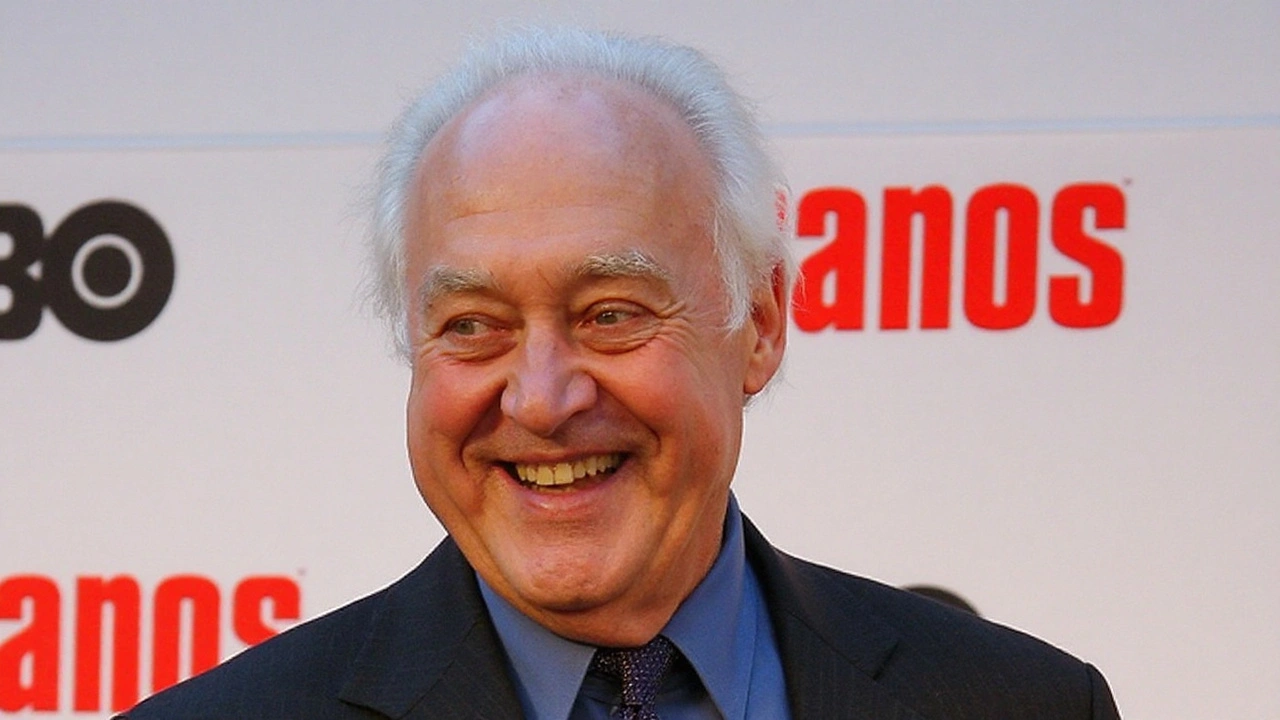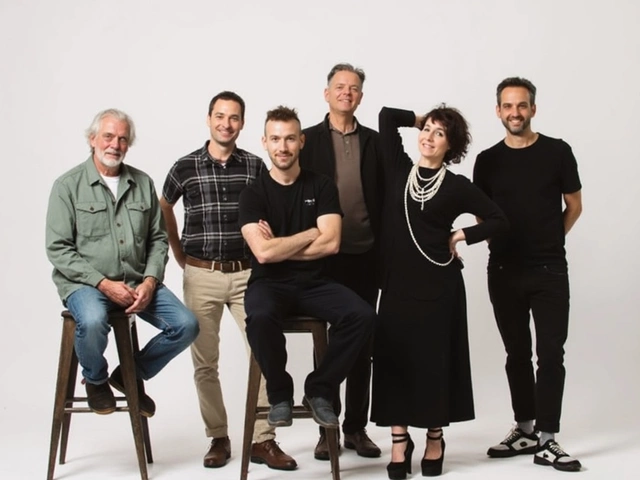A backstage lifer who became a TV fixture
He was rarely the loudest man in the room, but you noticed him every time he appeared. Jerry Adler, the stage-savvy New Yorker who turned a late-breaking on‑screen career into a string of memorable character roles—most famously as Herman “Hesh” Rabkin on The Sopranos—has died at 96. Family representatives said he passed away at his home in New York City on August 23, 2025. The family has asked for privacy.
Adler’s story starts long before cable antiheroes and prestige dramas. Born February 4, 1929, in Brooklyn, he came out of a powerhouse theatrical lineage tied to the Yiddish stage. His great-uncle, Jacob P. Adler, was among the giants of Yiddish theater. His cousins Stella and Luther Adler became pillars of American acting, with Stella later shaping generations of performers through her renowned studio. The arts weren’t a side hustle in the Adler home—they were the family business.
He grew up in a Yiddish-speaking, observant Jewish household and found the stage early, serving as president of the Dramatic Club at Samuel J. Tilden High School. He went on to Syracuse University, then did what resourceful theater kids do in New York: he worked. For decades. Quietly. Methodically. He learned how shows truly run—rehearsals, cues, budget squeezes, opening nights—working behind the scenes as a producer and director on Broadway and touring productions.
His father, Philip Adler, managed Broadway and touring shows for decades and served as a general manager for the Group Theatre, the 1930s collective that helped redefine American acting and playmaking. That institutional memory—the nuts and bolts of putting on a show—was part of Jerry’s DNA. Long before TV casting directors learned his name, he understood actors, timing, and audience rhythm because he had built the scaffolding that kept productions standing.
Then came the second act. In the 1970s, Adler shifted to on‑screen work. It wasn’t a youthful breakout; it was a craftsman walking onto a new kind of stage, armed with timing, restraint, and a sense of how to land a moment. Over the next five decades, he stacked up credits in TV and film, working steadily until his retirement in 2019. On camera, he carried himself like a man who had already seen every corner of the theater and knew how to get to his mark without fuss.
His TV portfolio reads like a tour of American screens from the 1990s through the streaming era. He became a fan favorite on The Sopranos as “Hesh,” a sharp-eyed loan shark and music-business veteran whose dry humor and old-school instincts often grounded Tony Soprano’s chaos. Adler appeared in 13 episodes across the series, and the character’s presence—equal parts confidant, conscience, and cautionary tale—helped sketch the show’s larger world of debt, loyalty, and memory. You felt the history in his voice.
He was just as vivid outside New Jersey. Adler recurred as Howard Lyman on The Good Wife and The Good Fight, playing an out-of-step partner whose dated habits became both comic relief and a critique of law-firm culture. He turned up as Mr. Wicker, the building maintenance man on Mad About You, a small part made indelible with a few lines and a look. He played Sam Stewart, the father of Bob Saget’s character in Raising Dad, and Fire Chief Sidney Feinberg on Rescue Me. Later, as TV reshaped itself for streaming, he showed up as Moshe Pfefferman in Transparent, Saul Horowitz on Broad City, and Hillston in Paul Rudd’s Living with Yourself. Different platforms, same result: he made scenes better.
Film directors noticed. Woody Allen cast him in Manhattan Murder Mystery, where Adler brought a perfectly calibrated New York cadence. He also appeared in The Public Eye, the Cameron Diaz–Toni Collette dramedy In Her Shoes, and the Meryl Streep–Uma Thurman romantic comedy Prime. None of these films belonged to him, but he left fingerprints on each—an expression here, a line held a beat longer there.
Part of what made Adler compelling was his bearing. At 6 feet 1, he had presence, but he didn’t lean on size. He played intelligence—of a man who listened more than he spoke, who could be amused or irritated without moving much at all. That restraint made him ideal for roles that called for quiet authority: a partner at a white-shoe firm, an old-school fixer, a father whose approval meant more because it was rarely offered.
Adler’s long run also tracked the medium’s transformation. He began in an era when guest roles were quick hits and syndication was the long game, then kept moving as cable dramas reshaped ambitions and streaming demolished schedules. He adapted without ever chasing trends. If anything, TV came around to him—valuing lived-in character actors who could carry history into a room and sell a world in a single scene.
Roots, range, and a working life that never blinked
That range was grounded in his earliest training: the Yiddish stage and the Broadway ecosystem that surrounded it. In those spaces, performance was communal, and craft was a trade. You learned reliability, economies of movement, and a respect for ensemble work. Adler kept those habits when cameras rolled. He didn’t grandstand; he shaped moments.
Family ties mattered, but they didn’t hand him a shortcut. Growing up connected to the Adler name meant living inside conversations about text, technique, and purpose. It also meant high standards. Stella Adler’s philosophy emphasized imagination, action, and the social stakes of a role. Jerry’s screen work—especially on The Sopranos and The Good Wife—reflects that. His characters were not ornaments. They were forces in the story, quietly tilting outcomes.
On The Sopranos, Hesh bridged worlds: old-line mob money and the record business. He knew where the bodies weren’t buried but where the royalties were. He could warn Tony with a joke or a sigh, and the audience understood the weight behind it. In an ensemble stuffed with fireworks, Adler’s notes were clean and cool, and they lasted.
As Howard Lyman in The Good Wife universe, he flipped the dial to comedy without losing humanity. The character’s cringe-inducing blind spots could have made him a punchline. Adler gave him edges and grace notes—a man out of time, not a monster. It’s the kind of work that lets dramas breathe between set pieces.
Colleagues across that long career frequently highlighted the same qualities when speaking about Adler over the years: preparation, timing, and a generous set. He knew where the camera was. He hit marks without making it look mechanical. Younger actors could watch him and learn how to calibrate a reaction shot or adjust a rhythm in a conversation so the other person landed a laugh.
The path he traveled—from backstage lifer to late-in-life screen mainstay—quietly challenged the idea that careers in entertainment are sprints with early finish lines. Adler didn’t rush. He gathered skills in the wings, then built a television presence brick by brick, role by role. There’s a reason casting directors kept calling: he made stories sturdier.
He worked across seven decades, from the mid-20th century’s theater corridors to 21st-century streaming sets, and retired in 2019. That endurance is its own achievement. It reflects not just health and luck, but an eye for material and the discipline to fit into many creative cultures without losing yourself.
Adler is survived by extended family members. As they asked for privacy, tributes began circulating from the shows and stages he touched—writers, actors, and crew remembering a colleague who brought the steadiness of Broadway to every set. If you ever watched him as Hesh, as Howard Lyman, or as the guy fixing a broken elevator on Mad About You, you already know the feeling: calm authority, a wry smile, and the sense that the scene was in good hands.
He came from the theater and never really left it. He just carried it with him—into living rooms, courtrooms, record labels, and mob hangouts—one unhurried, beautifully measured beat at a time.








Write a comment